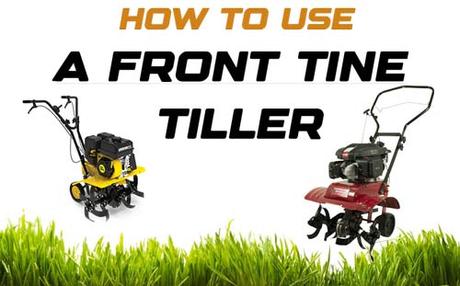Farmers and gardeners use tilling (hoeing) or cultivating to increase soil productivity. It aerates the soil as the gardener turns up the soil which lets water, oxygen, and important nutrients to penetrate the soil. It increases the productivity of the soil. The roots get aerated and the proper nourishment reaches the plant. The productivity of the soil increases and eventually it leads to better yield of the field. Furthermore, it has great benefits for the health of the soil and the garden. Before getting into the discussion of its functioning let us find out what tiller exactly is and what its assembly is.
What is the front tine tiller?

Benefits of Tine tiller
The benefits of a front tine tiller includes
- It is a time saver. It saves the time of the gardener. It does not require any manual effort nor does it cost much. It uses the prongs to slice down weeds, turns the soil to aerate, and loosen it up. You need not to worry about other things. Simply walk away after the work is done.
- It is quite economical to use tiller as it cuts the cost of other activities. For example you need not worry about the application of pesticides. An added plus is that you do not have to expand on fertilizers either. It is unwelcoming for the weeds to grow in the soil again. You are stress free in this regard again. The money you will save can come up with other uses for the next crop. Your present crop will be stronger and blooming as the soil is properly aerated with less weeds to get annoyed about.
- It assists stopping soil attrition. Tilling slackens up the soil. This loosening of the soil prevents wearing away of the soil. Keeping soil in place is challenging during a shift in the weather. You have to control the soil erosion by that time. For this purpose you will also require tools the absence of which can save you from great damage. By that time tilling becomes part of your economical pack. It reduces the loss of soil in the yard.
Garden tillers present a multiplicity of purposes to toil in the land. It enables the soil to get perfect for germination and plantation. It can weed, hoe, dig, plow, plow, crush and smash the soil for any given purpose.
How to work with a front tine tiller?
Now the question arises here is how to operate a front tine tiller?
Being the owner of a tine tiller is cool. Shake hand you are in the profession. Its addition to the garden toolkit solves many issues. They are for weeding and are beneficial for adding fertilizers to the yard. Before operating a tine tiller, read the directions by the manufacturer.
You will find this post quite beneficial in understanding how the tine tillers work.
Tilling is fun
- Mark out the patch in the garden to till. Begin tilling from one corner of the patch. Mark your garden in sections for tilling. Do one after another.
- Set the depth using the plastic ring. Remember do not go too deep.
- Start the engine and let it get warmer for a while at very low speed. Keep the engine to the fullest speed for efficient tilling. Opt for full speed if you are adept in its operation. If you are a newbie go at the speed which can assist you in controlling the tiller.
- Involve the tines by clasping the handle. Be careful. Have a grip on the handlebars or the tiller will hop away.
- Hold yourself tight and start tilling. Let the tiller impel itself under your firm control. Keep your tiller rocking a bit to keep it moving in the soil lumps and chunks.
- Take multiple passes from all directions to ensure not a single inch is left untilled. Repeat the process if needed.
Here you have a perfectly tilled garden.
Work out the setting by following the given steps.
A shallow depth setting is the most comfortable and effective setting of the tine tiller. If you do not opt for shallow setting the deep setting will cost you a pretty penny. The shallow setting does not pierce too deep. So it does not harm the roots and the plants. Till in such a way that only one row of plants is being worked out at a single time. For such purposes, the seasoned farmers or gardeners do not plant successive plants every year. Gardeners should be well aware of no-till techniques.
Given steps will help you to adjust your tine tiller's depth.
- Pull the gate arm (situated at the tail of the tine structure) open. Pull all of it out. You will find a ring made of plastic at the outer brink of the gate arm.
- In the next step hold the plastic ring and slip it up until it retorts into the proper place. Each snapping of the plastic ring will increase 1 inch of the scale marked in the handle. The farther the ring is to the center of the handle, the lesser the depth of the tine. You can increase the depth to a required level by making the ring closer to the center of the handle. The tine can extend up to 18 inches and this is the fully forward scale of the tine tiller.
- Turning off the handle clockwise raises the tines while turning helical or anticlockwise helps in lowering the tines. During the tilling few tines will be visible on the surface while the other few will remain buried inside the soil.
- You have to keep turning the handle until the targeted depth is achieved.
- Stop twisting the handle and hold it stable for a few seconds.
Your time has come. You can start mowing the soil as per your requirement when the tines slid back to the soil.
- For getting the desired depth you have to repeat from steps 1 through 4. This is only showing you how to do it as different manufacturers have different tine depth. If you want to avoid soil erosion your blades should be facing downside (face towards the soil).
Happy tilling to you.

